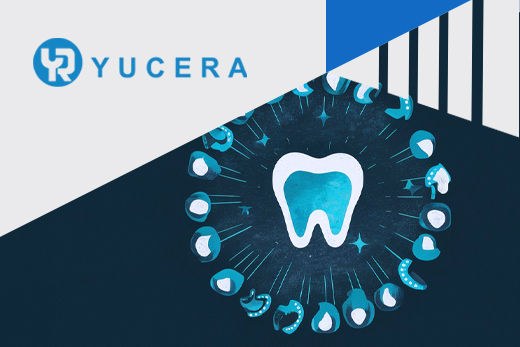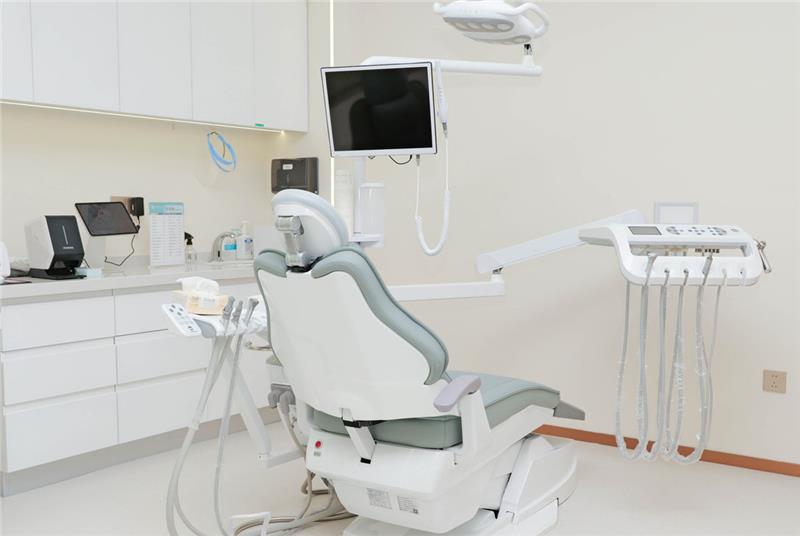Advantages of Digital Dental Materials Over Traditional Counterparts
2024-10-14
2024-07-02
The Comprehensive Guide to Digital Dental Solutions: Enhancing Modern Dentistry

Discover the transformative impact of digital dental solutions on modern dentistry. Learn about key technologies such as intraoral scanners, dental lab scanners, and dental milling machines, and explore their advantages, workflows, and future trends to improve efficiency, precision, and patient care.
1. What is Digital Dental Solution
Digital dental solutions encompass a broad range of technologies and practices that utilize digital tools to improve dental care. At the core of these solutions is the integration of digital dental technology into various aspects of dental practice, from diagnosis to treatment and beyond. These technologies include digital imaging, computer-aided design and manufacturing (CAD/CAM), 3D printing, and more.
The primary components of digital dental solutions include intraoral scanners, dental lab scanners, and dental milling machines. These tools work together to streamline and enhance the dental workflow. For instance, an oral scanner allows for precise digital impressions of a patient's mouth, reducing the need for traditional, often uncomfortable, molds. A dental lab scanner is used to create highly accurate digital models of dental impressions, which can then be used to design and fabricate restorations.
One of the significant advantages of digital dental solutions over traditional methods is their ability to offer higher precision and efficiency. Traditional methods often involve multiple steps and manual interventions, which can introduce errors and increase turnaround times. In contrast, digital tools can significantly reduce these limitations, providing faster and more accurate results.
In summary, digital dental solutions integrate various advanced technologies to offer more precise, efficient, and patient-friendly dental care. By leveraging digital dental lab equipment, dental professionals can achieve better outcomes while enhancing the overall patient experience.
2. The Advantages of Digital Dental Solutions
Digital dental solutions offer several significant advantages over traditional dental methods, making them a critical component of modern dental practices. Here are some of the key benefits:
Efficiency Enhancement: One of the most notable benefits of digital dental solutions is the substantial improvement in efficiency. Digital tools streamline various dental procedures, reducing the time needed for diagnosis and treatment. For instance, digital imaging and scanning systems can quickly capture detailed images of a patient's oral structures, enabling faster and more accurate diagnoses.
Precision Improvement: Digital dental technology, such as intraoral scanners and dental lab scanners, provides higher precision compared to traditional methods. These devices can capture highly detailed and accurate digital impressions, minimizing the risk of errors and ensuring a better fit for dental restorations. The increased accuracy leads to more predictable outcomes and higher-quality dental work.
Enhanced Patient Experience: Digital dental solutions significantly improve the patient experience by reducing discomfort and enhancing communication. Traditional impression methods can be uncomfortable for patients, often causing gag reflexes. In contrast, intraoral scanners provide a more comfortable and quicker alternative. Additionally, digital tools allow for better visualization and explanation of treatment plans, helping patients understand their dental conditions and proposed treatments more clearly.
Cost-Effectiveness: Over the long term, digital dental solutions can be more cost-effective. While the initial investment in digital dental lab equipment might be higher, the efficiency, accuracy, and reduced need for rework can lead to significant cost savings. Digital workflows minimize the risk of errors and reduce the amount of materials and time required for each procedure, benefiting both the dental practice and patients.
3. Key Digital Dental Equipment and Tools
The success of digital dental solutions largely depends on the advanced equipment and tools used in the process. Here's an overview of some of the most critical digital dental lab equipment:
Intraoral Scanners: An intraoral scanner is a handheld device used to create precise digital impressions of a patient’s teeth and gums. Unlike traditional methods that require physical molds, intraoral scanners use optical technology to capture detailed images quickly and comfortably. These digital impressions are then used for designing dental restorations such as crowns, bridges, and veneers. The use of intraoral scanners not only enhances accuracy but also improves patient comfort by eliminating the need for unpleasant impression materials.
Dental Lab Scanners: A dental lab scanner is essential for creating accurate digital models of dental impressions. These scanners are used in dental laboratories to scan physical models or impressions and convert them into digital files. The digital files can then be used for designing and fabricating various dental restorations through CAD/CAM systems. The high precision of dental lab scanners ensures that the restorations fit perfectly, leading to better clinical outcomes.
Dental Milling Machines: A dental milling machine is a critical piece of equipment used in the fabrication of dental restorations. These machines use computer-aided design (CAD) and computer-aided manufacturing (CAM) technology to mill dental restorations from blocks of ceramic, zirconia, or other materials. Dental milling machines provide high precision and consistency, enabling the production of high-quality crowns, bridges, and other restorations with minimal manual intervention.
3D Printing Technology: 3D printing is another revolutionary technology in the field of digital dental solutions. It allows for the fabrication of complex dental structures such as crowns, bridges, and orthodontic appliances with high precision and speed. 3D printing technology also enables the production of custom dental models, surgical guides, and even dentures, significantly improving the efficiency and accuracy of dental treatments. The ability to quickly produce high-quality dental restorations on-demand is one of the most significant advantages of 3D printing in dentistry.
4. The Workflow of Digital Dental Solutions
Understanding the workflow of digital dental solutions is essential to appreciate how these technologies integrate into modern dental practices. Here is a step-by-step overview of the typical digital dental workflow:
Initial Diagnosis: The workflow begins with an initial diagnosis using digital tools. Digital intraoral cameras and imaging systems capture high-resolution images of the patient’s teeth and gums, providing detailed information for accurate diagnosis. This step may also involve digital X-rays and 3D imaging to get a comprehensive view of the patient's oral health.
Data Collection: The next step involves data collection using an intraoral scanner or a dental lab scanner. An intraoral scanner captures a detailed digital impression of the patient’s mouth, eliminating the need for traditional molds. This digital data is then sent to a computer for further processing. In cases where physical impressions are taken, a dental lab scanner is used to convert these into digital models.
Data Processing and Design: Once the digital impressions are obtained, the data is processed using CAD software. This step involves designing the dental restoration (such as a crown, bridge, or veneer) based on the digital model. Dental professionals can make precise adjustments and ensure the restoration fits the patient’s anatomy perfectly. Advanced software allows for simulations and virtual adjustments, enhancing the design accuracy.
Manufacture and Fabrication: The design is then sent to a dental milling machine or a 3D printer for fabrication. The dental milling machine uses the design data to mill the restoration from a solid block of material, such as ceramic or zirconia. Alternatively, a 3D printer can create the restoration layer by layer, offering high precision and the ability to produce complex shapes. Both methods ensure high-quality and consistent results.
Installation and Adjustment: The final step is the installation of the fabricated dental restoration in the patient’s mouth. The dentist carefully fits the restoration, making any necessary adjustments to ensure a perfect fit and optimal function. Digital tools and imaging systems are often used during this step to verify the fit and make precise adjustments as needed.
The digital workflow not only streamlines the dental process but also enhances the accuracy and efficiency of dental treatments. By integrating digital dental technology at each step, dental professionals can offer better care and achieve superior outcomes.
5. The Future Trends in Digital Dental Solutions
The field of digital dental solutions is continually evolving, driven by advancements in technology and increasing demand for more efficient and precise dental care. Here are some of the key trends shaping the future of digital dental solutions:
Technological Innovations: One of the most exciting future trends is the integration of artificial intelligence (AI) and machine learning into digital dental technology. AI can analyze vast amounts of data to provide insights and predictive analytics, helping dentists make more informed decisions. For instance, AI algorithms can identify patterns in dental images, aiding in early diagnosis of conditions like cavities and gum disease. Moreover, machine learning can optimize treatment plans by predicting patient responses and outcomes.
Market Trends: The demand for digital dental services is expected to grow significantly in the coming years. As more dental practices adopt digital dental lab equipment, the market for these technologies will expand. Innovations such as portable intraoral scanners and more affordable 3D printing solutions will make digital dental technology accessible to a broader range of dental professionals. Additionally, the rise of tele-dentistry, enabled by digital tools, is set to transform how dental care is delivered, especially in remote or underserved areas.

Education and Training: As digital dental solutions become more prevalent, the need for education and training in digital dental technology will increase. Dental schools and continuing education programs are incorporating digital tools into their curricula to prepare the next generation of dental professionals. Ongoing training ensures that practicing dentists stay current with the latest advancements and can effectively integrate new technologies into their practices. This focus on education is crucial for maximizing the benefits of digital dental solutions and ensuring high standards of patient care.